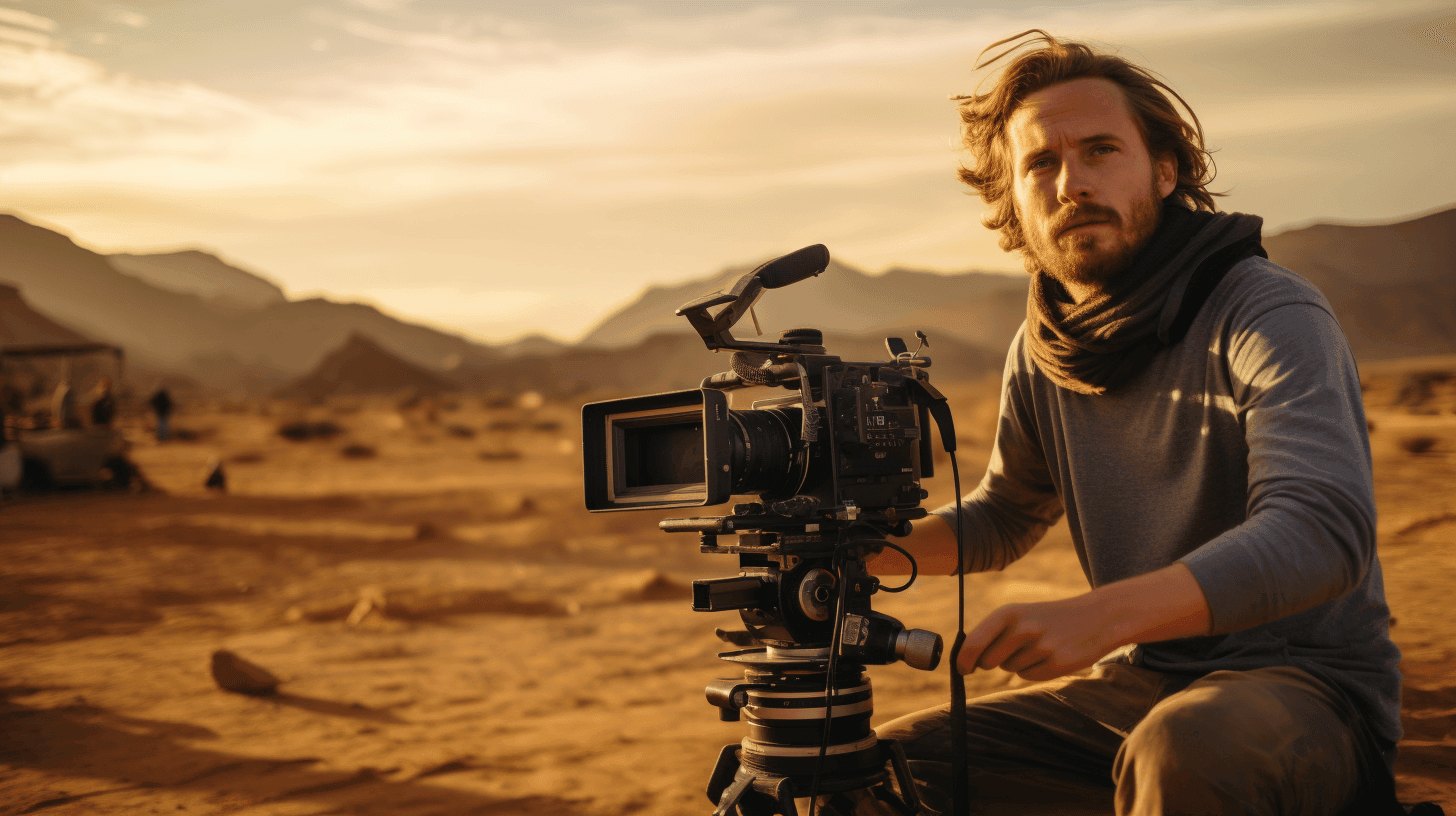Exploring the art of documentary filmmaking
Documentary filmmaking is a compelling art form, providing an unfiltered gaze into the world's many facets. From socio-political issues to natural wonders and personal narratives, this genre serves as a platform for truth and transparency.


In this comprehensive exploration of the "Art of Documentary Filmmaking", we'll uncover the nuances and complexities that contribute to the compelling nature of documentaries.
Here are some compelling reasons why documentary filmmaking is considered an art:
- Unfiltered reality 👀: Documentaries provide a unique perspective on reality, untouched by fictional elements, making them a truthful form of expression.
- Creative storytelling 📖: Despite dealing with factual content, documentaries use artistic storytelling techniques, including narrative structures, visual aesthetics, and sound design, to bring the story alive.
- Visual artistry 🎥: The use of cinematography in documentaries is a form of visual art. The way scenes are framed, how subjects are presented, and how the environment is depicted can significantly influence the audience's perception.
- Sound design 🎧: The sound design in documentaries, including ambient sounds, music, and voiceovers, significantly enhances the audience's experience and evokes specific emotions, making it an essential artistic element.
- Editorial craftsmanship ✂️: The way the footage is edited, deciding what to include and what to leave out, sequencing scenes, and overlaying sound and visuals are all aspects of the art involved in documentary filmmaking.
- Ethical artistry ⚖️: The ethics involved in documentary filmmaking – the fair and respectful representation of subjects, sensitive handling of controversial issues, and commitment to truth – are unique to this genre and contribute to its artistic value.
- Engagement and impact 💥: Documentaries have the power to engage audiences on an emotional level, provoke thought, and even incite change. This power to affect viewers is a testament to the art of documentary filmmaking.
- Evolution of the genre 🔄: The way the documentary genre has evolved over time, adapting to changing technologies, audience preferences, and societal issues, shows the dynamic nature of this art form.
Weaving truth: Authentic storytelling and directing in documentaries 📖
Storytelling in documentaries is a delicate dance 💃 of fact and narration. The "Authentic Storytelling in Documentaries" relies on the power of truth, brought alive through the lens of the director. A shining example is the critically acclaimed "An Inconvenient Truth" (2006), directed by Davis Guggenheim. The documentary successfully used Al Gore's passionate narrative about global warming to inspire audiences worldwide.

Similarly, the role of a director is paramount in shaping the story. Directors mold the narrative, shaping the raw footage into an engaging, thought-provoking film. A case in point is Ava DuVernay's "13th" (2016), which weaves together historical footage and expert interviews, creating a potent examination of racial inequality in the U.S. prison system.
Digging deeper: The role of research and interviews 🌟
Research and interviews form the bedrock of documentaries. Documentarians become detectives, probing and piecing together information to create a compelling narrative. Consider Alex Gibney's "Enron: The Smartest Guys in the Room" (2005). Gibney's extensive research and incisive interviews unravel the complicated tale of one of America's largest corporate bankruptcies.

Framing reality: Cinematography and editing in documentaries 🎥
The cinematography in documentaries helps transport viewers into the world the film explores. Whether it's capturing the expanse of Antarctica in "March of the Penguins" (2005) or the gritty realities of the Vietnam War in "Hearts and Minds" (1974), the cinematographer's lens can make viewers feel as if they're a part of the narrative.

Editing a documentary is no less critical. Consider the Sundance award-winning "Three Identical Strangers" (2018). The film's editors artfully stitched together interviews, archival footage, and reenactments, keeping viewers hooked until the shocking end.
Responsibility and connection: Ethical considerations and audience engagement 🧑
Ethical considerations are at the forefront of documentary filmmaking. Filmmakers have the responsibility to truthfully represent their subjects, ensuring their narratives aren't distorted. As Laura Poitras showcased in "Citizenfour" (2014), dealing with sensitive topics like Edward Snowden's NSA surveillance disclosures necessitates careful and ethical filmmaking.

Moreover, engaging audiences in documentaries is a tricky balance. Filmmakers must ensure their story is both educational and entertaining. Morgan Spurlock's "Super Size Me" (2004) perfectly encapsulated this balance. His personal journey exploring the health effects of McDonald's food was both alarming and engrossingly entertaining.
Amplifying realities: Sound design, funding, and distribution 🎬
Sound design, often overlooked, significantly enhances the audience's emotional connection. Just consider the profound use of silence in "Free Solo" (2018) during Alex Honnold's daunting climb, punctuated by the climber's heavy breathing and the scraping sounds of his hands and feet on the rock.

Funding and distribution are the final pieces of the documentary puzzle. Crowdfunding platforms, film grants, and partnerships with streaming platforms have made distribution more accessible. The Netflix-distributed documentary "Icarus" (2017) illustrates this, showing how modern platforms can bring niche topics like doping in sports to global audiences.

Evolution of the documentary genre 🎦
The documentary genre is continuously evolving, constantly adapting to new technology and audience preferences. Today's filmmakers have the unique advantage of multiple platforms and tools to amplify their stories. One such tool is Filmustage, an innovative solution for modern filmmakers.
Filmustage is an AI-driven tool designed to streamline the pre-production process. With Filmustage, you can:
- Break down your script into elements like PROPS and CHARACTERS in seconds 🕐.
- Create a shooting schedule and assign shooting locations via Google Maps 📍.
- Analyze the script with AI to identify potential risks and advise on their prevention 🧠.
- Automatically generate scene synopses 💡.
- Search the Internet for reference images 🌐.
- Adjust the 1/8th count for precise time management ⏱️.
- Export your projects to other industry-standard software like Final Draft, Movie Magic Scheduling, and Gorilla Scheduling 🔄.
- Collaborate with your team via the Team Access feature 👥.
In essence, Filmustage offers everything you need to bring your documentary from idea to screen, providing you with the resources to tell your stories that matter. Documentary filmmaking is a complex, enriching journey of capturing the essence of reality. With tools like Filmustage, this journey is now more accessible and efficient than ever before.
From Breakdown to Budget in Clicks
Save time, cut costs, and let Filmustage’s AI handle the heavy lifting — all in a single day.